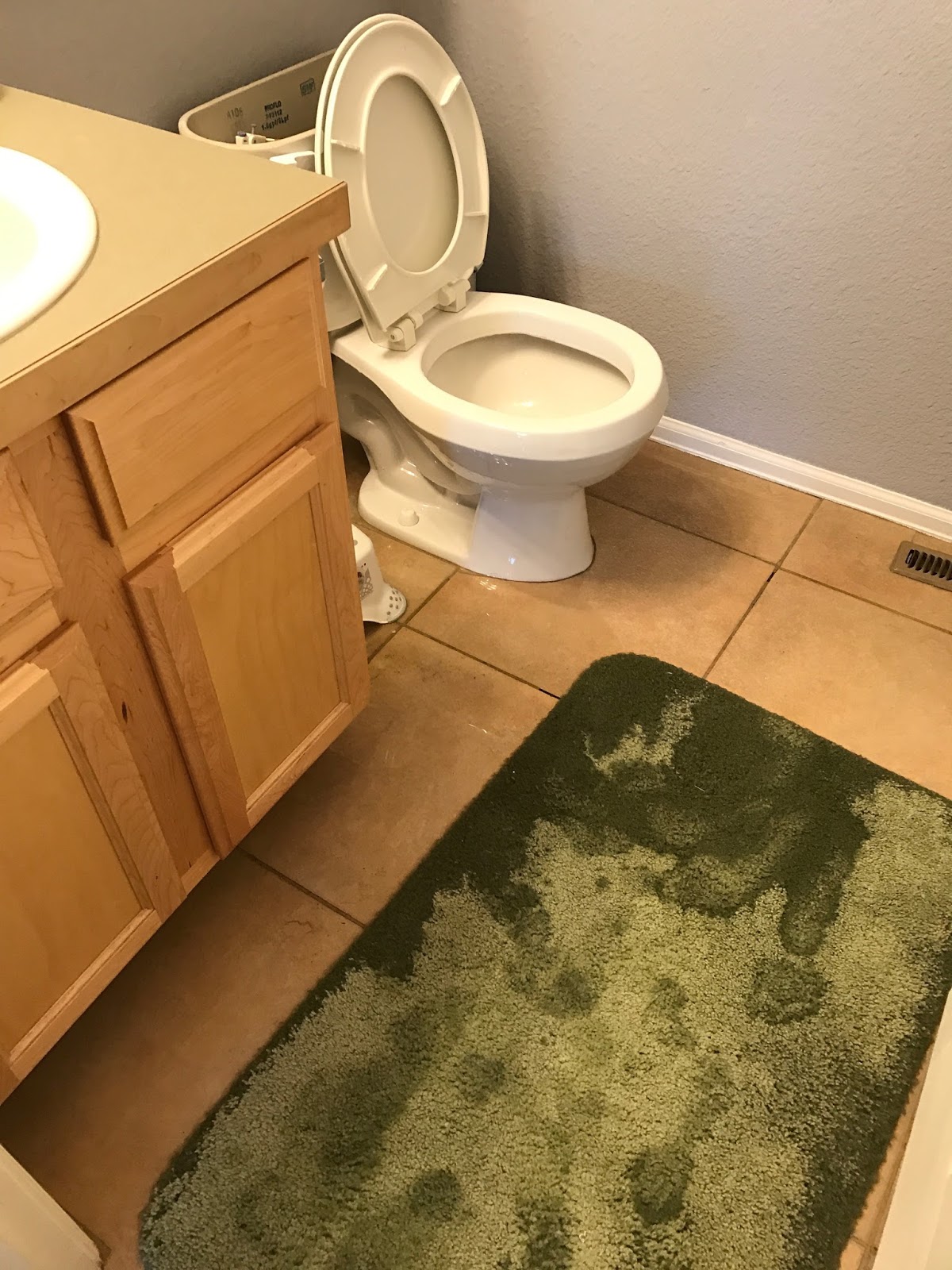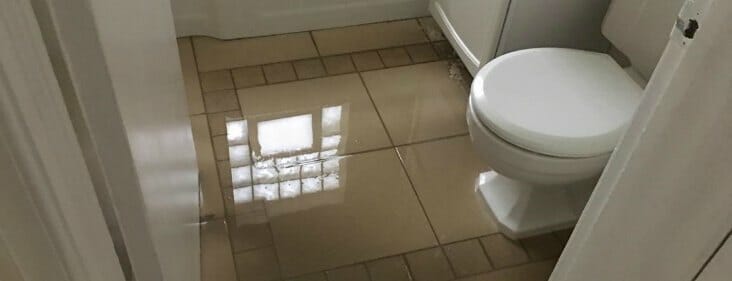Why Bathroom Moisture Causes Water Harm
Why Bathroom Moisture Causes Water Harm
Blog Article
The article author is making several good points relating to How to Repair and Prevent Bathroom Water Damage? overall in this article underneath.

Water damage usually takes place in the washroom as a result of the water utilized day-to-day. Sometimes, the damage could be a little mold and mildew from the shower. Various other times, it's large damages on your flooring. Whatever it is, it is always great to understand the reason and also prevent it prior to it happens.
This guide will undergo a few of the typical reasons for water damage in the washroom. We will certainly likewise analyze what you can do to avoid these causes from harming your bathroom. Let's dive in.
5 Typical Root Causes Of Water Damage in Washrooms
These are the common factors you would have water damage in your shower rooms as well as how you can detect them:
Burst or Dripping Pipes
There are numerous pipes carrying water to different parts of your bathroom. Some pipelines take water to the commode, the sink, the faucets, the shower, and also lots of various other locations. They crisscross the small area of the bathroom.
Every so often, these pipes can obtain rusty and also ruptured. Other times, human activity could create them to leak. When this happens, you'll locate water in the corners of your bathroom or on the wall surface.
To detect this, watch out for gurgling walls, mold and mildews, or mold. Call a professional emergency situation plumber to repair this when it happens.
Fractures in your wall ceramic tilesv
Shower room wall floor tiles have been specially designed for that function. They protect the wall surface from wetness from people taking showers. Nonetheless, they are not indestructible.
Sometimes, your bathroom wall tiles crack and allow some dampness to permeate into the wall. This can possibly ruin the wall surface if you do not take any type of activity. If you observe a crack on your wall surface ceramic tiles, fix it right away. Do not wait up until it destroys your wall surface.
Overflowing commodes as well as sinks
As humans, sometimes we make errors that could create some water damage in the restroom. As an example, leaving your sink tap on can trigger overruning and damages to other parts of the restroom with dampness.
Also, a malfunctioning toilet could create overruning. For example, a busted commode handle or other parts of the tank. When this occurs, it could harm the floor.
As soon as you see an overruning sink or toilet, call a plumber to help deal with it promptly.
Roofing Leakages
Often, the trouble of water damage to the shower room could not come from the bathroom. As an example, a roof leak can cause damage to the shower room ceiling. You can identify the damage done by looking at the water stains on the ceiling.
If you locate water stains on your ceiling, check the roof covering to see if it's harmed. Then, call a specialist to assist address the problem.
Excess Dampness
It's great to have that lengthy shower and also sprinkle water while you dance around as well as act like you're doing, yet occasionally these acts might create water damage to your shower room.
Spraying water around can create water to go to edges and create molds. View exactly how you spread excess moisture around, as well as when you do it, clean it up to stop damage.
Conclusion
Water damage to your restroom can be aggravating. Nevertheless, you can manage it if you protect against several of the reasons pointed out in this guide. Call a specialist emergency plumber if you notice any serious damages.
How to Repair a Water-Damaged Wall in the Bathroom
All you need to know to repair bathroom wall water damage – from identifying the water source to finishing the repair professionally. If you don’t act quickly to resolve a water damage problem, you could find that it develops into a mold issue and/or cause structural damage to your home. Follow this guide to repair your bathroom before it's too late.
All you need to know to repair bathroom wall water damage
Water damage is a common household problem, and one that, if left unrepaired, can quickly lead to structural problems and health issues. The two most likely rooms where water damage may occur is the bathroom and the kitchen – where water is used often and there is high humidity.
What is water damage?
It is easy to think of water damage as caused by a flood or leaking tap or burst water pipe. However, when water damage is assessed, there are three main categories into which water falls (as classified by the American National Standards Institute). These categories are defined as:
Category 1 Water – ‘Clear Water’
This is sanitary water. There is usually no major threat to health by washing with this water, drinking it, or inhaling if it is streaming. Most water that enters your home will be category 1 water, while most water leaving your home will be either category 2 or 3 water. It may also come from melting snow, rainwater and water tanks.
Damage caused by this type of water can usually be repaired or restored, though this doesn’t mean that there are no potential health issues.
Category 2 Water – ‘Grey Water’
This is contaminated water – sometimes considerably so – and will cause illness if consumed or if it comes into contact with your skin. Water damage in this category is often caused by overflows from toilet bowls, and damage to washing machines and dishwashers. While damaged items might still be repaired or restored after damage by grey water, it is more difficult and more expensive to do so.
If the water damage in your home has been caused by grey water, it is advisable to have repairs made by professionals.
Over time, grey water will deteriorate and become black water.
Category 3 Water – ‘Black Water’
Category 3 water, also known as black water, is highly contaminated and a great risk to health. This may contain raw sewage, heavy metals, and other toxic substances. It will smell terrible.
If this is the water that has caused damage in your bathroom, do not touch it. Stop the water flowing if possible, seal the room and call the experts: it really isn’t worth the risk of ill health and disease that could be fatal. It is very unlikely that items can be repaired or restored if they have been damaged by black water.
https://www.porterscleaning.com/blog/how-to-repair-a-water-damaged-wall-in-the-bathroom/

How to Repair a Water-Damaged Wall in the Bathroom
All you need to know to repair bathroom wall water damage – from identifying the water source to finishing the repair professionally. If you don’t act quickly to resolve a water damage problem, you could find that it develops into a mold issue and/or cause structural damage to your home. Follow this guide to repair your bathroom before it's too late.
All you need to know to repair bathroom wall water damage
Water damage is a common household problem, and one that, if left unrepaired, can quickly lead to structural problems and health issues. The two most likely rooms where water damage may occur is the bathroom and the kitchen – where water is used often and there is high humidity.
What is water damage?
It is easy to think of water damage as caused by a flood or leaking tap or burst water pipe. However, when water damage is assessed, there are three main categories into which water falls (as classified by the American National Standards Institute). These categories are defined as:
Category 1 Water – ‘Clear Water’
This is sanitary water. There is usually no major threat to health by washing with this water, drinking it, or inhaling if it is streaming. Most water that enters your home will be category 1 water, while most water leaving your home will be either category 2 or 3 water. It may also come from melting snow, rainwater and water tanks.
Damage caused by this type of water can usually be repaired or restored, though this doesn’t mean that there are no potential health issues.
Category 2 Water – ‘Grey Water’
This is contaminated water – sometimes considerably so – and will cause illness if consumed or if it comes into contact with your skin. Water damage in this category is often caused by overflows from toilet bowls, and damage to washing machines and dishwashers. While damaged items might still be repaired or restored after damage by grey water, it is more difficult and more expensive to do so.
If the water damage in your home has been caused by grey water, it is advisable to have repairs made by professionals.
Over time, grey water will deteriorate and become black water.
Category 3 Water – ‘Black Water’
Category 3 water, also known as black water, is highly contaminated and a great risk to health. This may contain raw sewage, heavy metals, and other toxic substances. It will smell terrible.
If this is the water that has caused damage in your bathroom, do not touch it. Stop the water flowing if possible, seal the room and call the experts: it really isn’t worth the risk of ill health and disease that could be fatal. It is very unlikely that items can be repaired or restored if they have been damaged by black water.
https://www.porterscleaning.com/blog/how-to-repair-a-water-damaged-wall-in-the-bathroom/
I was brought to that write-up on How to Repair and Prevent Bathroom Water Damage? from an acquaintance on our other website. So long as you liked our article if you please don't forget to share it. Thank you so much for taking the time to read it.
See Availability Report this page